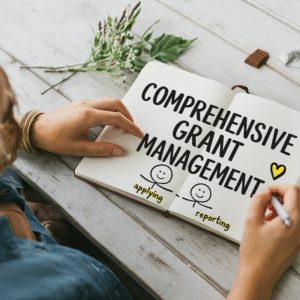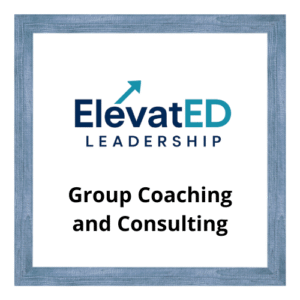We’ve all had that gut-dropping moment as nonprofit leaders or grant managers.
You open a spreadsheet and realize you’ve applied for 10 different grants… and, somehow, asked funders to cover 150% of the Program Director’s salary.
Suddenly your mind races:
- Did I double-dip?
- Do I need to send a revised budget?
- Will the funders notice?
- Should I just pretend this didn’t happen?
How We End Up Here
Most of the time, this happens not because you’re careless, but because you’re stuck in reactive mode.
You’re applying for grants to solve today’s emergencies—to keep the lights on, to make payroll, to keep programs running.
And in the scramble, you lose sight of the bigger picture.
The result?
Disconnected proposals
Budgets that don’t align
Missed deadlines
Sky-high stress levels
Strategy Is Your Safety Net
Your strategic plan isn’t just a binder on a shelf.
It’s the north star that should guide your grant decisions.
When your funding strategy aligns with your broader plan, you can:
- Track budgets accurately
- Avoid double-funding mistakes
- Launch campaigns with clarity and confidence
- Communicate clearly with funders
- Stay ahead of deadlines
- Build toward long-term growth, not just short-term survival
So why do so many small nonprofits struggle to keep their funding strategy aligned with day-to-day decisions?
The strategic Plan is often driven by an outside consultant who has only a surface-level understanding of the organization.
While consultants bring valuable insights about external trends and funding landscapes, they rarely live the day-to-day realities of the nonprofit. A small nonprofit leader, on the other hand, is deeply rooted in the organization’s mission, in constant dialogue with the community, and uniquely positioned to guide the strategy. Their lived experience and connection to the work make them the best person to lead the effort—ideally with the consultant serving as a facilitator, not the driver.
A traditional plan can take six months to complete, and by the time it’s finally finished, the funding landscape has already shifted. Opportunities have changed, priorities have evolved, and the plan that felt so relevant at the start is now out of step with reality—making it incredibly difficult for organizations to adapt and act on it.
No one can realistically keep up with a dense, 20-page strategic plan. The real key is to organize the strategy visually—making it easier to understand, simpler to reference, and grounded in the insights that matter. That’s why a visually interactive mind map often serves as a far more effective strategic plan than a thick report gathering dust on a shelf.
A Better Way Forward
Small nonprofits: lead your own strategic planning and fund development. Know when to bring in a consultant to fill in knowledge gaps.
Map your strategy with a visual tool that’s simple to follow.
Adjust your plan each quarter to keep it relevant.
Approach every proposal and campaign with clarity and confidence, knowing it drives your long-term goals.
Whether you need someone to take the stress of writing and managing grants off your plate, or you’re ready to learn how to create a well-functioning strategic and fund development plan with expert guidance, we’re here to support you.


